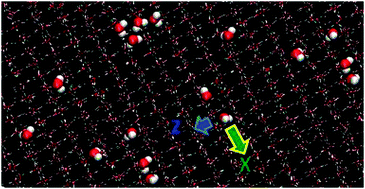We present an Arrhenius analysis of self-diffusion on the prismatic surface of ice calculated from molecular dynamics simulations. The six-site water model of Nada and van der Eerden was used in combination with a structure-based criterion for determining the number of liquid-like molecules in the quasi-liquid layer. Simulated temperatures range from 230 K–287 K, the latter being just below the melting temperature of the model, 289 K. Calculated surface diffusion coefficients agree with available experimental data to within quoted precision. Our results indicate a positive Arrhenius curvature, implying a change in the mechanism of self-diffusion from low to high temperature, with a concomitant increase in energy of activation from 29.1 kJ mol−1 at low temperature to 53.8 kJ mol−1 close to the melting point. In addition, we find that the surface self-diffusion is anisotropic at lower temperatures, transitioning to isotropic in the temperature range of 240–250 K. We also present a framework for self-diffusion in the quasi-liquid layer on ice that aims to explain these observations.

You have access to this article
 Please wait while we load your content...
Something went wrong. Try again?
Please wait while we load your content...
Something went wrong. Try again?


 Please wait while we load your content...
Please wait while we load your content...